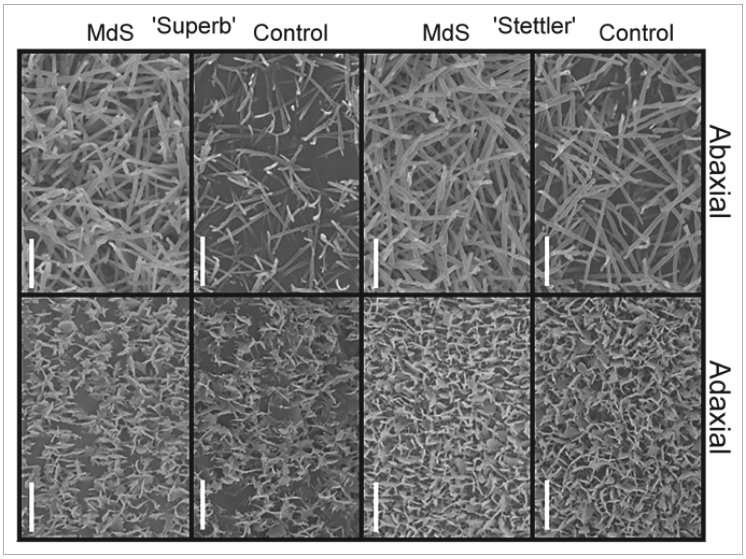New screening technique will allow crop breeders to develop drought resistant varieties faster

Scientists from the Canadian Light Source (CLS) have teamed up with researchers from the University of Saskatchewan to develop a new technique to examine drought tolerance in wheat.
Chithra Karunakaran and Karen Tanino's team developed a simple non-destructive method to screen hundreds of wheat leaf samples in a day, reducing the time and cost associated with traditional breeding programs to select varieties for drought tolerance. Their findings were published in the November issue of Physiologia Plantarum.
"Developing these types of tools better enables physiologists to complement breeding programs," says Tanino, Professor of Plant Sciences at the U of S.
"By identifying key traits of interest, which can be targeted and rapidly screened, we can enable breeders to accelerate crop improvement."
According to Statistics Canada, Canadian wheat production is anticipated to decline by 19.5 per cent in 2017, in part due to the dry conditions experienced in the prairies. As global temperatures shift and rainfall patterns become more erratic, drought will continue to contribute to low yields and loss of food production.
Using the wax of a flag leaf as their test subject, the team members examined the morphological characteristics of the plant, as well as the chemical signatures, comparing the drought-resistant Stettler wheat variety to the Superb, which is more vulnerable to drought conditions. The flag leaf is the final leaf to emerge during plant development and is crucial for attaining high yields.
"The agriculture community knows that leaf wax plays a role in conserving water and acts as a physical barrier to disease," says Karunakaran, Science Manager, Environmental & Earth Sciences at the CLS, "but before this we hadn't understood why that's happening on a molecular level."
Using the bright light produced at the CLS, Karunakaran and her team were the first to link micro and macronutrients in the leaves in relation to their ability to tolerate drought, finding higher levels of zinc in the drought-resistant Stettler. These results could have significant implications for future breeding programs, and also raise questions about the role of zinc in fertilizer.
Current breeding programs base drought tolerance on crop yields, using field trials to determine results. The new method will allow scientists to characterize drought-tolerant varieties much earlier, resulting in reduced costs and taking the new variety from the lab to the field much faster.
Now that methods and protocols have been established, this project will extend to new varieties, eventually looking at other crops such as canola, allowing Canadian farmers to stay competitive in a global market.
More information: Wheat flag leaf epicuticular wax morphology and composition response to moderate drought stress is revealed by SEM, FTIR-ATR and synchrotron X-ray spectroscopy. Physiologia Plantarum (2017). DOI: 10.1111/ppl.12637
Provided by Canadian Light Source





















